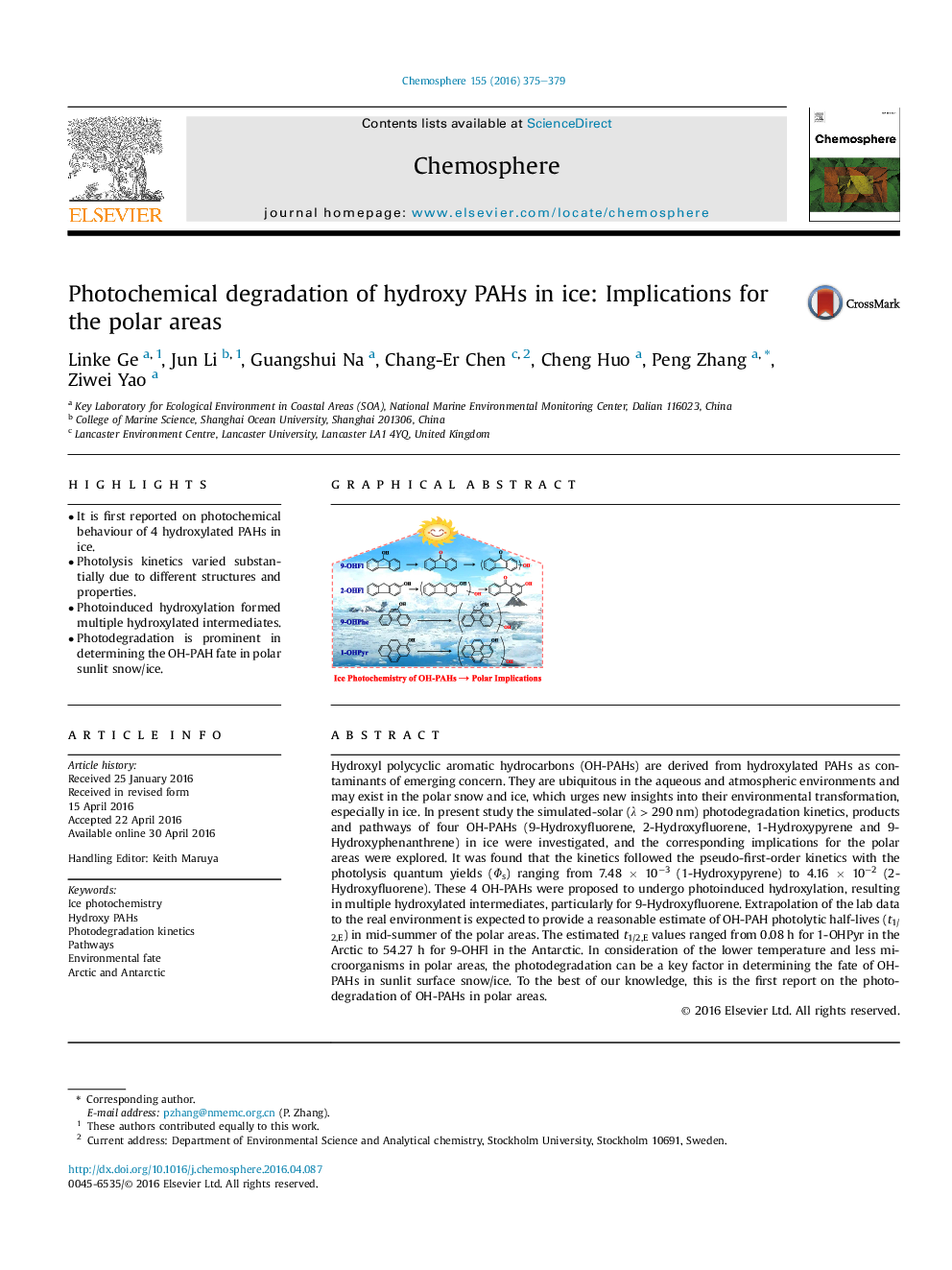| کد مقاله | کد نشریه | سال انتشار | مقاله انگلیسی | نسخه تمام متن |
|---|---|---|---|---|
| 4407501 | 1618816 | 2016 | 5 صفحه PDF | دانلود رایگان |
• It is first reported on photochemical behaviour of 4 hydroxylated PAHs in ice.
• Photolysis kinetics varied substantially due to different structures and properties.
• Photoinduced hydroxylation formed multiple hydroxylated intermediates.
• Photodegradation is prominent in determining the OH-PAH fate in polar sunlit snow/ice.
Hydroxyl polycyclic aromatic hydrocarbons (OH-PAHs) are derived from hydroxylated PAHs as contaminants of emerging concern. They are ubiquitous in the aqueous and atmospheric environments and may exist in the polar snow and ice, which urges new insights into their environmental transformation, especially in ice. In present study the simulated-solar (λ > 290 nm) photodegradation kinetics, products and pathways of four OH-PAHs (9-Hydroxyfluorene, 2-Hydroxyfluorene, 1-Hydroxypyrene and 9-Hydroxyphenanthrene) in ice were investigated, and the corresponding implications for the polar areas were explored. It was found that the kinetics followed the pseudo-first-order kinetics with the photolysis quantum yields (Φs) ranging from 7.48 × 10−3 (1-Hydroxypyrene) to 4.16 × 10−2 (2-Hydroxyfluorene). These 4 OH-PAHs were proposed to undergo photoinduced hydroxylation, resulting in multiple hydroxylated intermediates, particularly for 9-Hydroxyfluorene. Extrapolation of the lab data to the real environment is expected to provide a reasonable estimate of OH-PAH photolytic half-lives (t1/2,E) in mid-summer of the polar areas. The estimated t1/2,E values ranged from 0.08 h for 1-OHPyr in the Arctic to 54.27 h for 9-OHFl in the Antarctic. In consideration of the lower temperature and less microorganisms in polar areas, the photodegradation can be a key factor in determining the fate of OH-PAHs in sunlit surface snow/ice. To the best of our knowledge, this is the first report on the photodegradation of OH-PAHs in polar areas.
Figure optionsDownload as PowerPoint slide
Journal: Chemosphere - Volume 155, July 2016, Pages 375–379
